
1-23 #Nephew : US gets ready for immediate actions in the chip sector if Russia invades Ukraine; TSMC has announced a capital spending of USD40-44B for 2022; Tesla has recently given out orders for camera modules; etc.

White House National Security Council (NSC) officials Peter Harrell and Tarun Chhabra have reportedly told representatives of the Semiconductor Industry Association (SIA) to get ready for immediate actions in the chip sector if Russia invades Ukraine. The range of potential measures could include broad financial sanctions and export restrictions like those currently in place for Iran and North Korea, as well as Huawei. Major Korean companies are on alert as the White House has told the U.S. semiconductor industry to be ready for new restrictions on exports to Russia if Moscow invades Ukraine. (Laoyaoba, Reuters, RT, Business Korea)
TSMC has announced a capital spending of USD40-44B for 2022 keeping in view its massive new fab construction plans. This is above the industry forecast of USD38-42B. According to TSMC, 70-80% of capex in 2022 will be used for advanced node technologies (7nm and below), 10-20% for specialty technologies and 10% for advanced packaging. If factor in TSMC’s higher spending as well as greater sales growth (25-29% YoY) in 2022, the WFE capital intensity (capex to sales) for logic (non-memory) semiconductor reaching 23% in 2022-2023, the highest in the past 20 years. TSMC’s massive capacity plan also implies higher wafer demand in advanced nodes, largely used in smartphone processors today. But Counterpoint Research expects the demand from high performance computing (HPC) to exceed that of smartphones from 2023 at TSMC. Counterpoint Research)
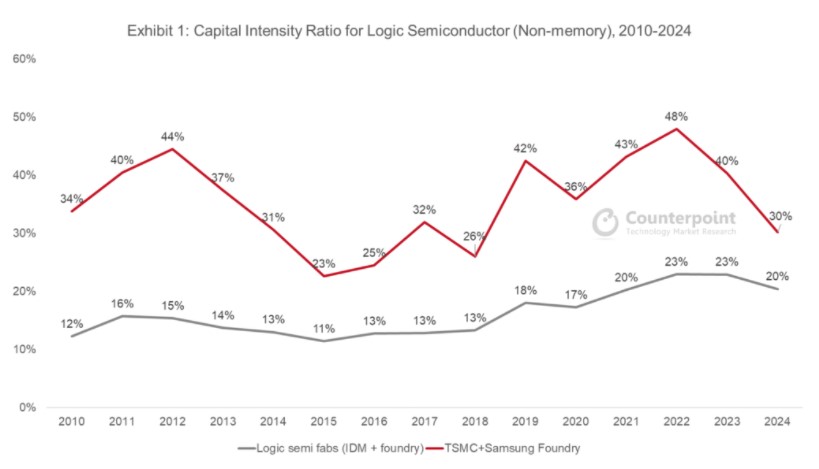
Today, the CMOS chip manufacturing is the pinnacle of the human technology defining economy, society and perhaps us as modern humans. This was highlighted by the recent chip shortage, followed by the ‘shocking’ realization that more than 80% of all chips are manufactured in the Far East. Important decisions need to be taken by the Western Governments regarding the future of the CMOS technology. When contemplating such decisions some of the ‘post’ or ‘beyond’ CMOS mythology from the recent past need to be re-examined. Semiwik’s Asen Asenov believes that today there is still nothing on the horizon with potential for replacing CMOS. However, all the evidence suggests the maturing and consolidation of the semiconductor industry. Nothing new with this either, just look at the history of avionic industry: after approximately 80 years of rapid technology development the avionic industry is now a mature industry with only Boeing and Airbus remaining as major players, one of them is in the US and the other one is in Europe. Unfortunately, in the semiconductor industry case, most of the potential winners in the CMOS end game are in the Far East with China emerging as a strong contender. (SemiWiki, EE World, Laoyaoba)
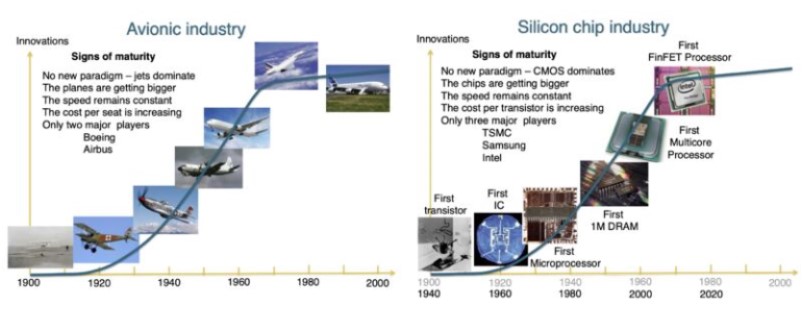

Visionox has indicated that the company has already 2 generations of camera under display technology, which have been delivered to end customers; 144Hz and 165Hz products have been delivered to end customers for ultra-high refresh rate screens; the company has been preparing for a long time in the field of foldable display and has the corresponding capacity production technology and capabilities, and the products have been supplied to leading brand customers.(Laoyaoba, Sohu, EE World, Inpai)
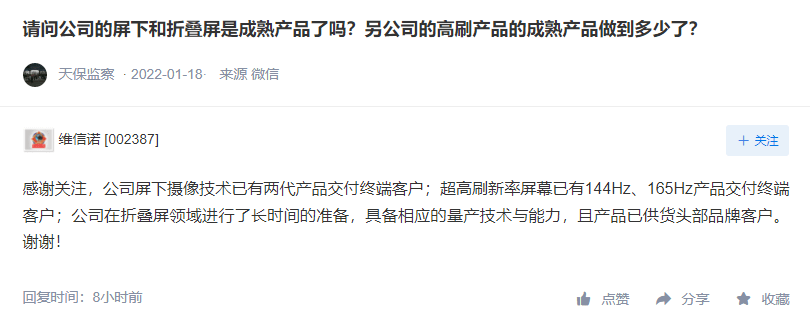

O-Film has revealed that the company’s 8P lens project has been successfully developed and is currently in the trial production stage. O-Film has also revealed that the 100-megapixel 7P optical lens has been mass-produced, and multi-performance products such as telephoto lens, macro lens and ultra-wide-angle lens have all entered the lens supply chain of mainstream mobile phone manufacturers in China.(Laoyaoba, 163, Sohu)

Black Sesame Technologies, an autonomous driving chip maker, has announced that it has reached a strategic cooperation agreement with MAXIEYE, an autonomous driving company. The two sides stated that the next generation of high-level intelligent driving platform will be released in 2022. Equipped with integrated domain controllers, the system demonstrates safe driving and parking capabilities. (Laoyaoba, Pandaily)
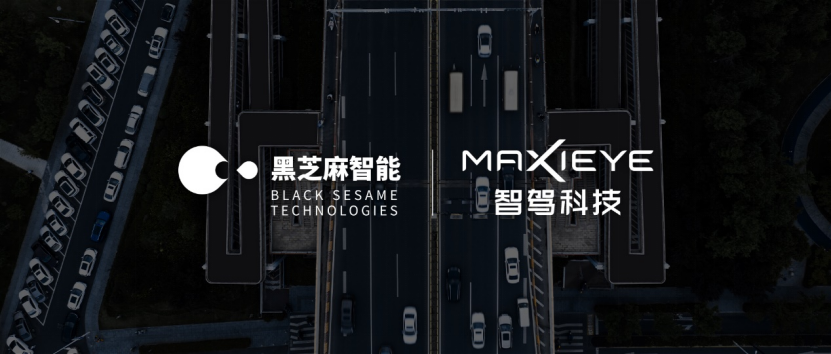
Tesla has recently given out orders for camera modules. LG Innotek, Samsung Electro-Mechanics and their Taiwanese rivals are taking part in the bid to win order. Tesla has given out orders for camera modules it plans to use in Model S, Model 3, Model X and Model Y. It has also given out orders for its yet-to-be-launched Semi, its electric truck, and Cybertruck, its electric pickup truck. The orders will be worth billions of dollars as Tesla is ordering camera modules it plans to use for 2022 models as well as those for 2023. The bidding process is expected to be completed within 1Q22. LG Innotek is the biggest supplier of camera modules to Tesla; the company supplied 60% to 70% of the modules used by the US EV giant in 2021. Samsung Electro-Mechanics, in turn, had supplied 30% to 40%. (Laoyaoba, Teslarati, The Elec)

University of California (UC) San Diego has developed an advanced new brain sensor known as an electrocorticography (ECoG) sensor that promises to take the safety and efficiency of cancer and epilepsy treatment into new terrain. These sensors are commonly placed on the exposed brain cortex during surgery to record the emanating electrical signals, and reveal which regions of the brain tissue are active. This can in turn enable neurosurgeons to safely remove brain tumors or sections of tissue where epileptic seizures are originating, while leaving healthy tissue untouched. The ECoG devices in use today are mostly comprised of somewhere between 16 and 64 sensors, though some research-grade examples can include up to 256. The UC San Diego is able to produce ECoG grids with either 1,024 or 2,048 sensors. (CN Beta, Science Daily, Yahoo, New Atlas)
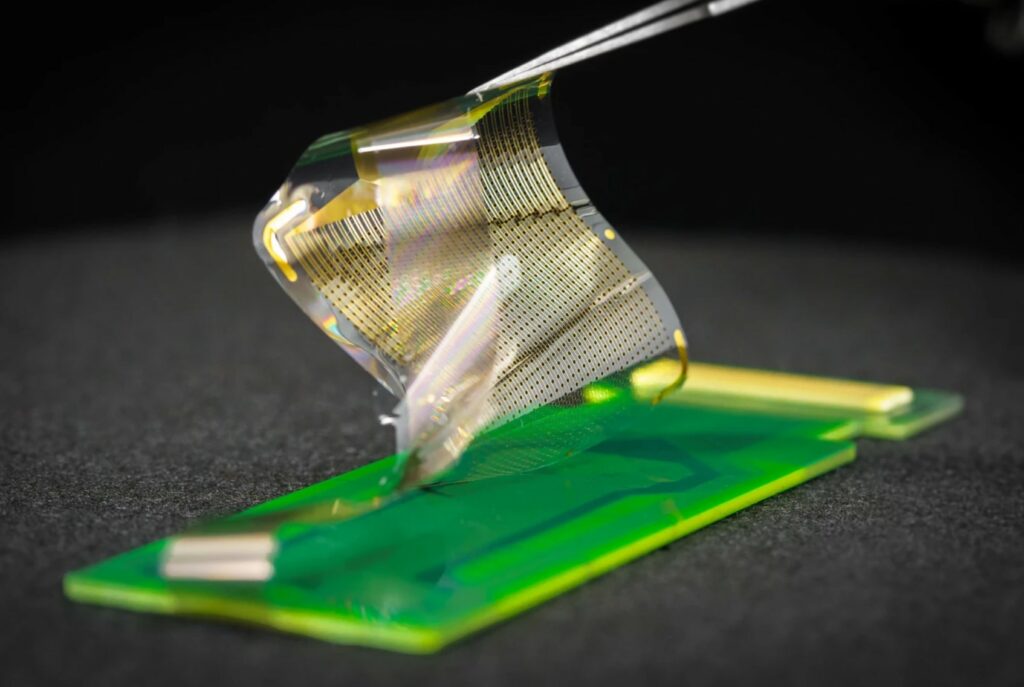

Meizu CEO, Huang Zhipan, has said that in 2022, Meizu will focus on creating the ultimate, easy-to-use, and unique Meizu-style flagship. Meizu will continue to promote the all-round development diversification strategy. Thus, every product and service can make consumers and partners from all walks of life feel the sincerity and sincerity of Meizu. In 2022, Meizu will also continue to provide consumers with high-quality and distinctive products. It will continue the Lipro smart home high-end products, and Meizu PANDAER will bring more cool-themed products.(My Drivers, GizChina, Sina)
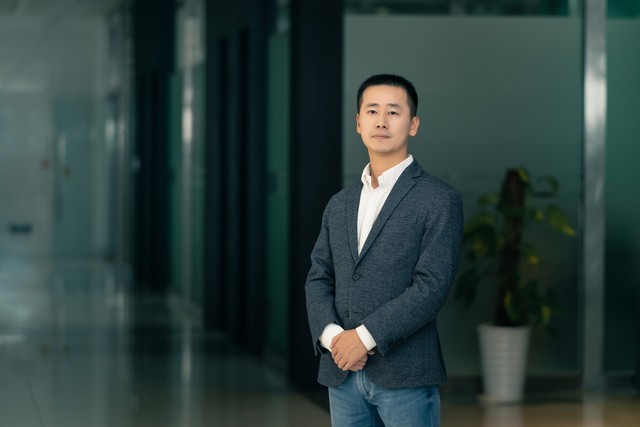
Analyst firm Piper Sandler’s approximately twice yearly survey of teenagers in America shows that Apple iPhone ownership is up 1% to 87% since its last report. At the same time, the new figures claim 88% of teenagers say their next phone will be an iPhone, which is down 1% from the last report. Both the 87% iPhone ownership and 88% intention to purchase an iPhone metrics are near record highs for their survey. (Apple Insider, Piper Sandler)
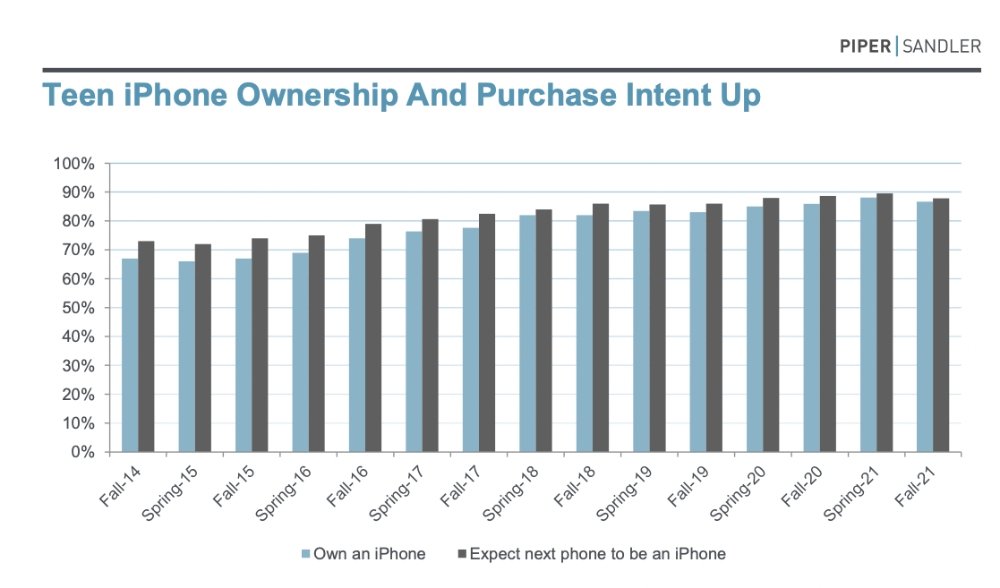
IDC expects the global smartphone market to grow at a CAGR of 3.6% in 2020-2025. 5G smartphone penetration will exceed 40% in 2021 and is expected to reach 69% in 2025. At the same time, we see that the price of 5G mobile phone is also dropping. It is expected that by the end of the forecast period in 2025, the price of the 5G application service market will drop to USD404. As the 5G era is gradually approaching, the long-term logic brought about by 5G replacement remains unchanged. The price-performance ratio of 5G mobile phones released on the market has greatly exceeded market expectations, and 5G mobile phones will become a battleground for strategists. (Guosheng Securities report)
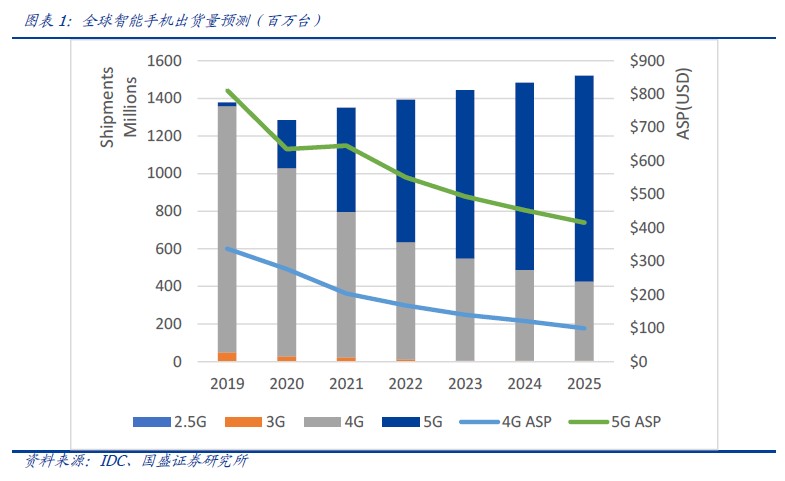

Global PC shipments reached 90.3M in 4Q21 to maintain their YoY growth momentum at 3.1%, coming on a relatively high base in 2020. The situation on the component supply and logistic fronts continued to improve but at a slow pace. The shipment forecast for 1Q22 remains optimistic, mainly due to a solid demand and improving component supply. OEMs and ODMs are also expecting some easing of pressure on PC components. (Counterpoint Research)
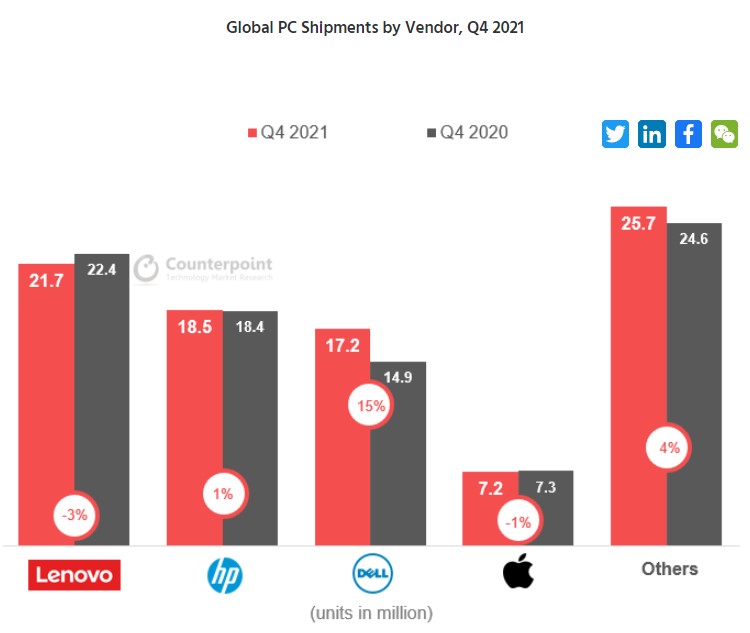

According to The NPD Group, sales of VR/AR hardware and accessories during the 5-week holiday period from the week of Thanksgiving through Christmas (21 Nov 2021 –25 Dec 2021) more than doubled in unit and dollar sales, up 180% and 153%, respectively, versus the prior year. The growth was slightly lower for full year 2021, up 163% in unit sales and 137% in revenue compared to the previous year. (Android Headlines, Engadget, NPD)
Samsung Electronics’ obsession for foldable smartphones is drawing market concerns as Samsung is missing out on what’s coming next: The metaverse. Though growth has apparently stopped for its smartphone business, Samsung is still pushing for foldable smartphones to reignite the momentum, without offering the next big thing — XR devices — to log into the metaverse. Even if Samsung develops XR devices, the company lacks the content and the platform to create a metaverse ecosystem. To latch onto the booming XR device market, Samsung in Nov 2021 made belated investments in DigiLens, a startup that makes XR glasses based in California. (CN Beta, MacRumors, Korea Herald)
The global VR live broadcast market will continue to grow rapidly in the next 5 years, and China’s domestic VR live broadcast growth will accelerate in 2021. Compared with the single perspective of traditional live broadcasts, VR live broadcasts can create a 720-degree field of vision without dead ends, greatly improving the sense of space, immersion, and participation; it can be widely used in sports events, panoramic medical care, education and training, and wedding scenes; emergency safety experience and many other scenarios. In 2021-2025, the global VR live broadcast scale will increase from USD1.161B to USD4.113B, with a CAGR of 37.19%. In 2021, the scale of China’s VR live broadcast market is expected to increase by 100.31% year-on-year to CNY6.43B. (Guosheng Securities report)
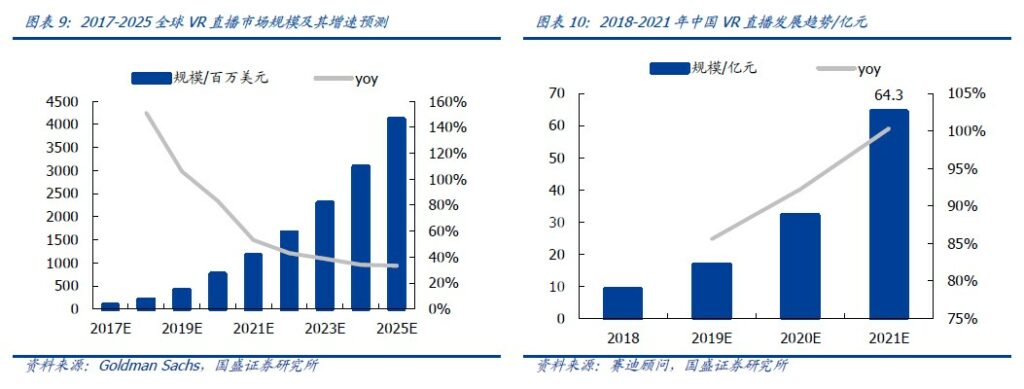

BYD has announced its partnership with leading autonomous vehicle company Nuro to begin producing the company’s third-generation electric autonomous delivery vehicle. The new vehicle is approximately 20% smaller in width than average passenger cars, giving bicyclists and pedestrians more room to maneuver alongside the bot. The announcement follows Nuro’s USD600M Series D funding round which closed in 4Q21 and was led by Tiger Global Management with participation from other investors.(TechCrunch, Business Wire, Green Car Congress, Medium)
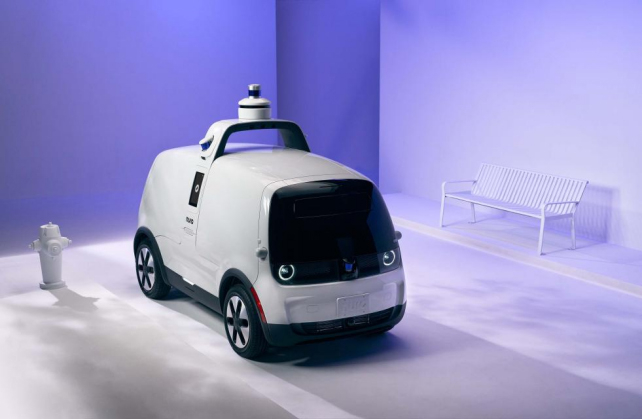
SOCAR, a south Korean car-sharing startup, has filed for an initial public offering (IPO). SOCAR has reached approximately USD834B (KRW1T) valuation after raising USD50.7M (KRW60B) in Oct 2020. The company plans to launch a transportation super app in 2022 that will provide all-in-one mobility services like car sharing, electric bike sharing, parking lot search, car hailing, train reservation and more, according to Jaewook Park, CEO of SOCAR. (TechCrunch, Korea Exchange)
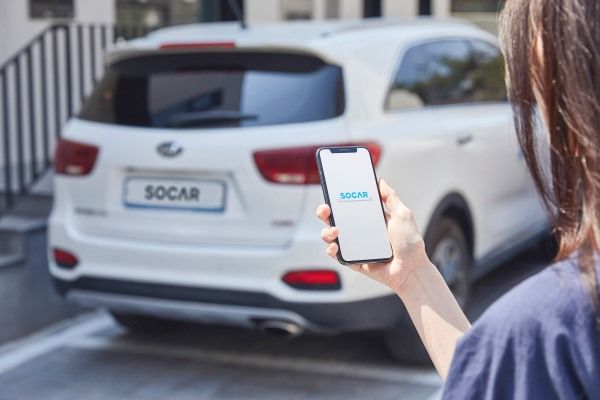

Turing Labs is a startup that is applying AI to assist consumer packaged goods (CGP) companies with product design and formulation. Investors believe in their potential. Turing has announced that it raised USD16.5M in venture capital, bringing its total raised to over USD18.25M. Product formulation deals with understanding how materials interact to provide properties, processing, and delivery of active ingredients in a usable form. Turing aims to streamline the formulation process by using companies’ data to build a knowledge base and then leveraging AI to create visualizations that show how formulations compare to benchmark products.( VentureBeat, TechCrunch)
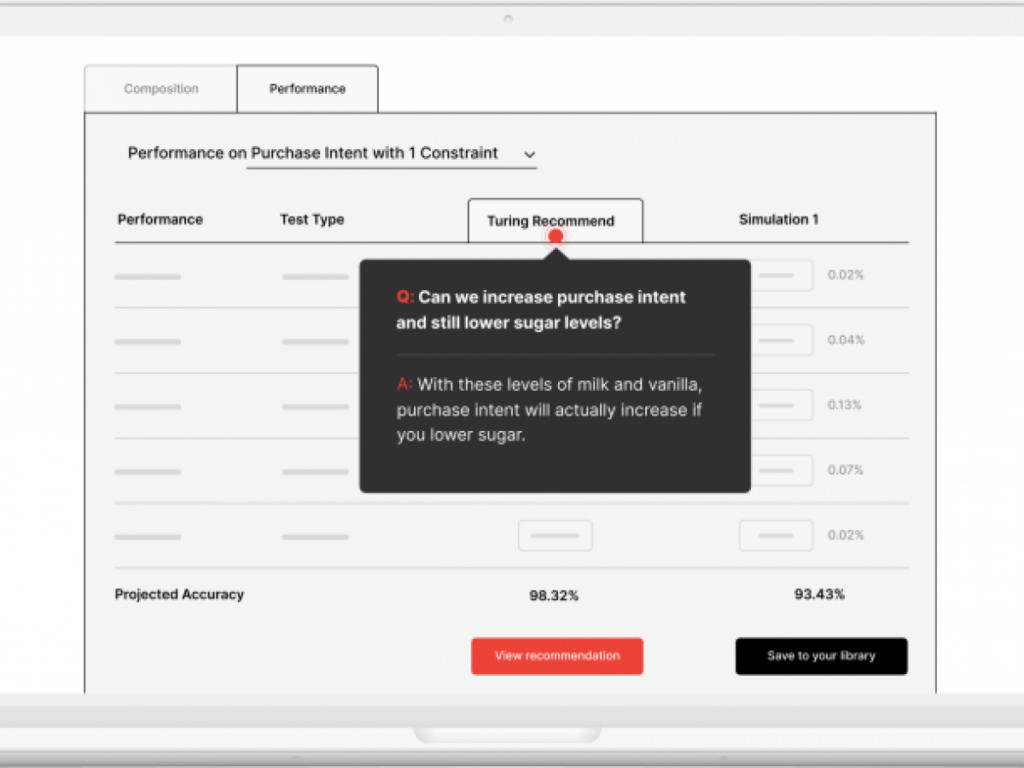

NFT marketplace OpenSea is acquiring crypto wallet startup Dharma Labs. Dharma’s Ethereum wallet allowed users to connect their bank accounts, and buy and swap tokens while engaging with other elements of the DeFi ecosystem. OpenSea will be shutting down Dharma’s app as part of the deal, a move that is sure to be controversial with the crypto wallet’s users who will have just 1 month to offload assets from the wallet to a different account. (TechCrunch, OpenSea)
